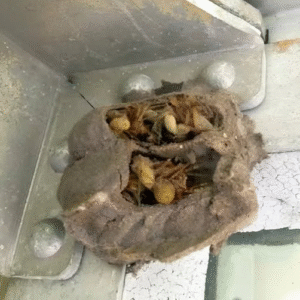What feeling overwhelms you when you spot an insect in your home? The immediate impulse might be to grab something and squash it, and that’s not without reason. Some insects can deliver fatal stings and carry harmful toxins.
Particularly unsettling are the creepy crawlers; those small, unsettling creatures with numerous legs often make you want to eliminate them quickly. However, having read this article, you might reconsider squashing those intimidating centipedes you find in your bathroom.
The sight of centipedes scurrying around can be quite jarring. But after learning about their beneficial role in your home, you might opt to spare them in the future as a token of appreciation.
Interestingly, these wriggling, fast-moving creatures have been silently safeguarding your home from other tiny pests. There’s a unique type of centipede in homes that’s slightly smaller than its counterparts and boasts around 20 legs.
These little creatures act as your home’s unseen pest control, keeping cockroaches, spiders, silverfish, bedbugs, and ants at bay. They consume almost every arthropod they come across due to their insatiable appetite.
However, being beneficial doesn’t mean you should welcome centipedes en masse into your home; it simply means you might want to spare the occasional one or two as a sign of gratitude.
While their presence can be startling, especially to young children or those who find them unsightly, instead of crushing them, consider letting them be or gently relocating them outside.
Refrain from squashing every bug you encounter indoors to avoid the potential risk of releasing hundreds of baby spiders into your home. It’s not a sight you’d want to see.
Moreover, centipedes aren’t as menacing as they seem. They are delicate creatures that are usually not strong enough to cause significant harm, aside from giving you a fright.
Considering they don’t spread germs like some other insects do, it further highlights their helpful nature.
Even if centipedes unnerve you, they are mostly harmless. However, the same cannot be said for some other insects. Several dangerous illnesses, which can be fatal without proper medical attention, are associated with certain insects.
Here are some deadly insects you should be wary of encountering indoors:
Bullet Ants: True to their name, their bites can make you feel like you’ve been shot. They are among the largest ant species and are commonly found in the jungles of Paraguay and Nicaragua.
Botfly Larvae: The problem lies with the larvae, not the botfly itself. Females lay their eggs under the skin, and as the larvae grow, they burrow deeper, causing infections that significantly alter the skin tissue. Some people claim to feel the larvae moving beneath their skin.
Fleas: These blood-feeders can cause itching, irritation, and sometimes skin infections due to their bites.
Fire Ants: Known for their painful stings, these ants can sting repeatedly, leading to painful white pustules that can last for weeks. There are over 295 ant species, and some produce venom that can cause allergic reactions in some people.
Chagas Disease: Transmitted by the kissing bug through its bites, this parasite is responsible for up to 12,000 deaths annually.
Giant Japanese Hornets: The largest hornets, with stings that can be lethal, claiming approximately 40 lives each year.
Tsetse Flies: Responsible for transmitting sleeping sickness, these flies are estimated to cause 500,000 deaths annually in Africa.
Killer Bees: Due to their sheer numbers, they can attack aggressively and in large groups, often resulting in fatalities.
Driver Ants: These ants attack with considerable force due to their powerful mandibles. In a single raid, they can kill several animals and have a tendency to bite humans.
Mosquitoes: Considered the deadliest insects and possibly the most lethal organisms on earth, mosquitoes are estimated to cause up to 1 million deaths annually due to diseases like encephalitis, West Nile virus, malaria, and yellow fever.








